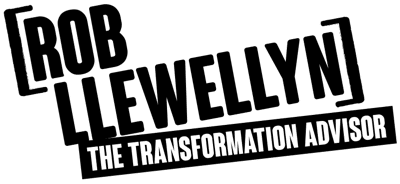Business Frameworks
Business frameworks are models, tools, and processes used to analyse and solve complex business problems. These frameworks provide a systematic approach to decision-making, allowing organisations to assess their current situation, identify areas for improvement, and develop strategic plans for growth and success. They are often developed by industry experts and thought leaders, and are used by business leaders, consultants, and academics to guide decision-making and drive organisational change.
If you want to learn more about business frameworks join Transformation Professionals.
If you are looking for a business framework for medium to large organisations, keep reading.
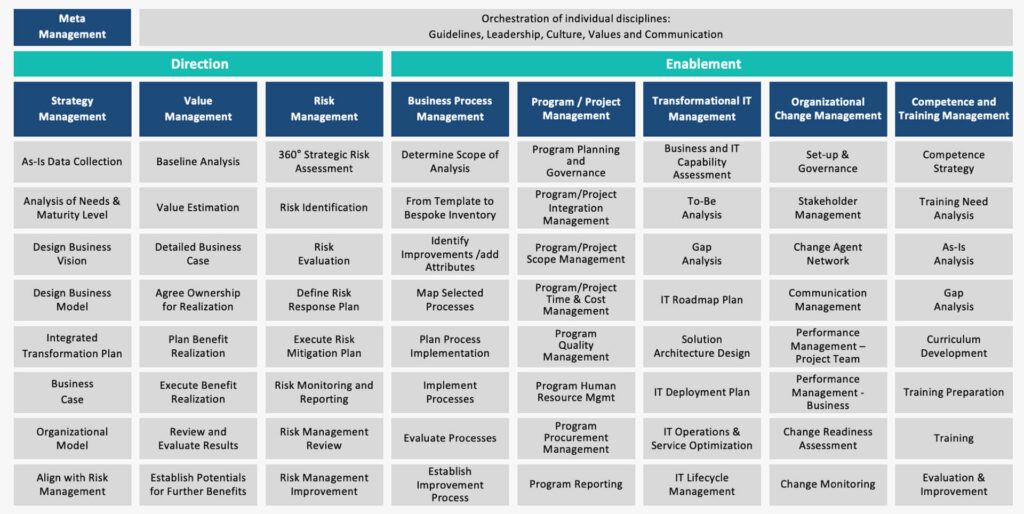
The History of Business Frameworks
The use of business frameworks has been around for centuries. In ancient times, rulers and military leaders used frameworks to make strategic decisions and achieve their goals. In more modern times, business frameworks have been developed to help organisations analyse their operations, identify areas for improvement, and make strategic decisions.
One of the earliest and most well-known business frameworks is Porter's Five Forces developed by Harvard Business School professor Michael Porter in the 1970s. This framework analyses the competitive forces in an industry to help businesses understand their competitive position and develop a strategy for success.
Many other business frameworks have been developed, including SWOT analysis, the Balanced Scorecard, the McKinsey 7S Framework, the Business Model Canvas, and others. Businesses across all industries and of all sizes utilise these frameworks to attain their objectives and remain competitive in an ever-changing business environment.
Why Business Frameworks are Important
Business frameworks are important because they provide a structured approach to problem-solving and decision-making. They help businesses to analyse complex situations, identify key issues, and develop strategies for addressing them. Frameworks also provide a common language and set of tools that enable businesses to communicate and collaborate effectively, both internally and with external partners. By following a proven methodology, businesses can reduce the risk of failure and increase the likelihood of success. Additionally, frameworks allow businesses to adapt to changing circumstances and take advantage of new opportunities, ensuring their continued relevance and competitiveness in the marketplace.
Business frameworks have been integral in both the development of strategy and the execution of it, because they help inform key decisions and offer scenarios and insight on what options to adopt.
In simple terms, a business framework is a system of rules that are used to govern a process or decisions. They help ensure that the output of decisions or processes is consistent, of a high standard, and aligned with an organisation's principles, values, and goals.
There is an abundance of business frameworks available and top professionals in their field become highly proficient in using those that are relevant to their particular line of work.
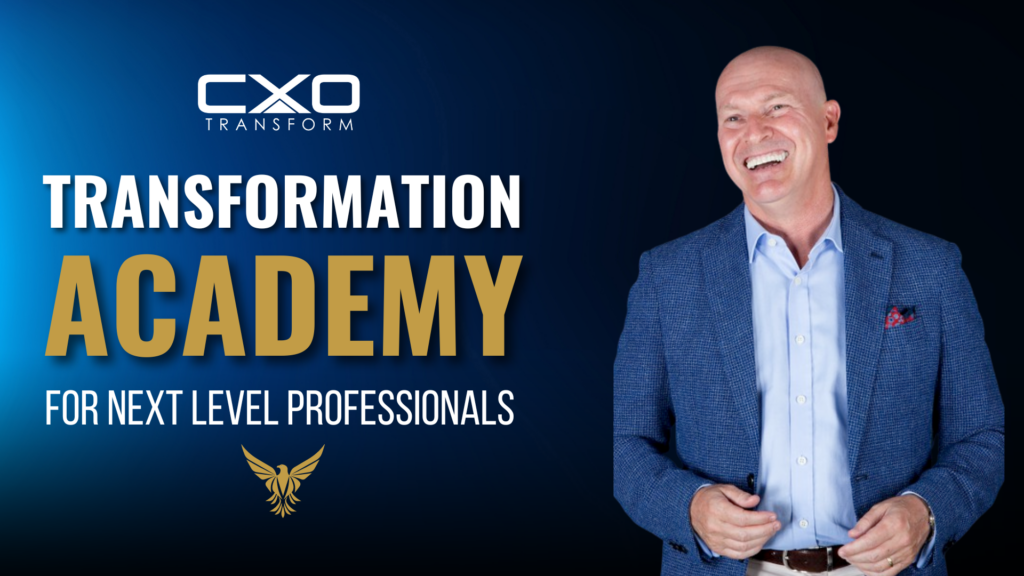
What are Frameworks in Business?
Frameworks in business are tools or models that help organisations structure, organise, and approach complex business challenges. They provide a systematic way of analysing a problem, developing a solution, and implementing it in a repeatable and scalable manner. Frameworks can be used for a wide range of business functions, including strategy, innovation, marketing, project management, and more. They can be developed internally or externally, and may draw from various disciplines, such as economics, psychology, sociology, or engineering. The goal of a framework is to provide a common language and shared understanding to facilitate decision-making, communication, and action within an organisation.
What are the Elements of a Business Framework?
The elements of a business framework will vary depending on the specific framework being used, but some common elements include:
- Goals and objectives: The framework should identify the goals and objectives that the business is trying to achieve.
- Key performance indicators (KPIs): KPIs are the measurable metrics used to determine whether the business is meeting its goals and objectives.
- Processes and procedures: The framework should outline the processes and procedures that the business will use to achieve its goals and objectives.
- Roles and responsibilities: The framework should clearly define the roles and responsibilities of each individual involved in the process.
- Resources and capabilities: The framework should identify the resources and capabilities required to achieve the business's goals and objectives.
- Risks and mitigation strategies: The framework should identify potential risks and include strategies to mitigate those risks.
- Performance metrics and monitoring: The framework should include performance metrics and a monitoring plan to track progress and adjust as needed.
- Continuous improvement: The framework should be designed for continuous improvement and include mechanisms for ongoing evaluation and adjustment.
Why Some Organisations Don't Use Business Frameworks
Business frameworks can be difficult to use and implement because they often require a significant amount of time, effort, and resources to fully understand and apply. Additionally, each business framework has its own specific set of rules, processes, and terminology, which can make it challenging to choose the right one for a specific business need.
Furthermore, a lack of buy-in or support from key stakeholders within the organisation can also hinder the effective use and implementation of business frameworks. Finally, even the most well-designed business frameworks may not be effective if they are not tailored to the specific needs and context of the organisation.
Some organisations may not use frameworks simply because they are resistant to transformation and change or may be content with their current processes and methods.
Business Framework Adoption
Although individuals may have their preferred frameworks, there is no ultimate business framework. In some cases, you may need to leverage multiple frameworks to complete a project. Frameworks can expedite the process of gathering and analysing information. However, experience and sound judgement cannot be substituted by frameworks. Business frameworks can save time, but expertise in business and the ability to collaborate effectively with colleagues is what can make a difference in an organisation.
The best leaders and managers recognise the significance of well-documented frameworks that are comprehensible to everyone, and don't rely on ambiguous or unclear frameworks. Nowadays, larger organisations tend to have these well-documented frameworks, which are widely adopted and taught throughout the enterprise. As business frameworks have become more important to the way organisations work, they are now frequently mentioned in job advertisements, as well as in the CVs and resumes that applicants submit.
Introducing Half a Dozen Business Frameworks
In this article, I have chosen to highlight six of the many business frameworks that are available. However, there are a wide variety of frameworks that businesses can choose from to achieve their goals. If you work with a different framework, feel free to share it in the comments section below.
Strategy Frameworks
Strategy frameworks are models or tools used to help organisations develop and implement their strategic plans. They provide a structured approach to analysing a company's internal and external environment, identifying strengths, weaknesses, opportunities, and threats, and developing a clear and effective strategy to achieve the organisation's goals. Strategy frameworks are commonly used in areas such as business management, marketing, finance, and operations.
Strategy business frameworks help structure business thinking and guide businesses as they grow and accomplish their missions. They demonstrate how a business or department plans to use projects and other initiatives to uphold the overall vision of executive stakeholders. They can also be used to analyse business issues and develop strategies that are appropriate for a particular organisation.
Strategy Framework Example:
Porter’s Five Forces Framework
Porter's five forces framework enables organisations to comprehend the degree of competition, market attractiveness, and profitability in a given industry. The framework is based on the notion that there are five forces that determine the competitive intensity and market attractiveness. The five forces are used to identify where power lies in a business situation, helping to understand an organisation's competitive position and evaluate the strength of potential positions the organisation may consider moving into.
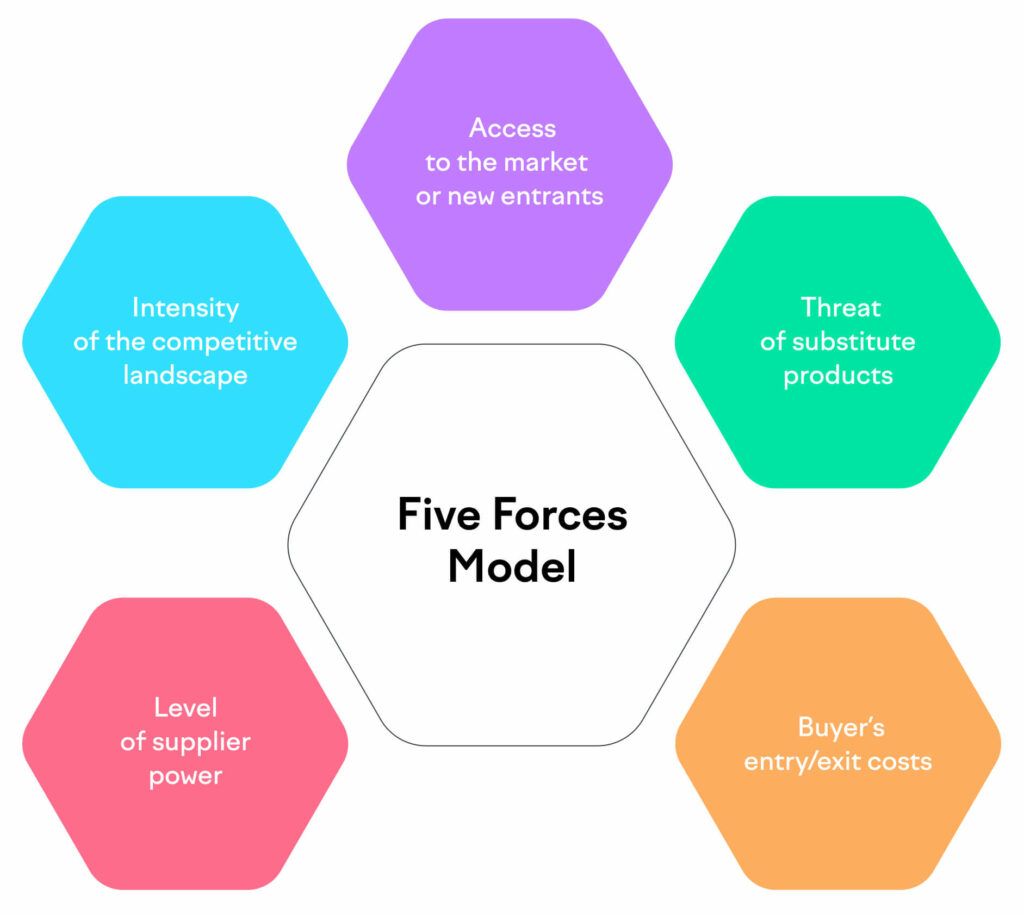
The framework consists of five forces, which are:
Competitive rivalry
Threat of substitute products
Bargaining power of buyers
Threat of new entrants
Bargaining power of suppliers
Innovation Frameworks
Innovation business frameworks are tools or models that provide a systematic approach to identifying, developing, and implementing innovative ideas. These frameworks help organisations to structure their innovation efforts and to focus on specific areas where they can achieve the greatest impact. Innovation frameworks can be used to identify customer needs, generate new ideas, test and validate concepts, and create a roadmap for implementation.
Businesses that do not have a well-defined innovation framework, whether it is for sustaining innovation, disruptive innovation, incremental innovation, or radical innovation, may not realise the potential of their ideas, and may miss out on valuable opportunities. In the absence of a clear innovation framework, organisations may simply be gathering ideas without recognising their true worth.
Innovation Framework Example:
Doblin’s Ten Types of Innovation
One way to design new innovations and evaluate the current pace of changes in products and services is through the Ten Types framework developed by Doblin.
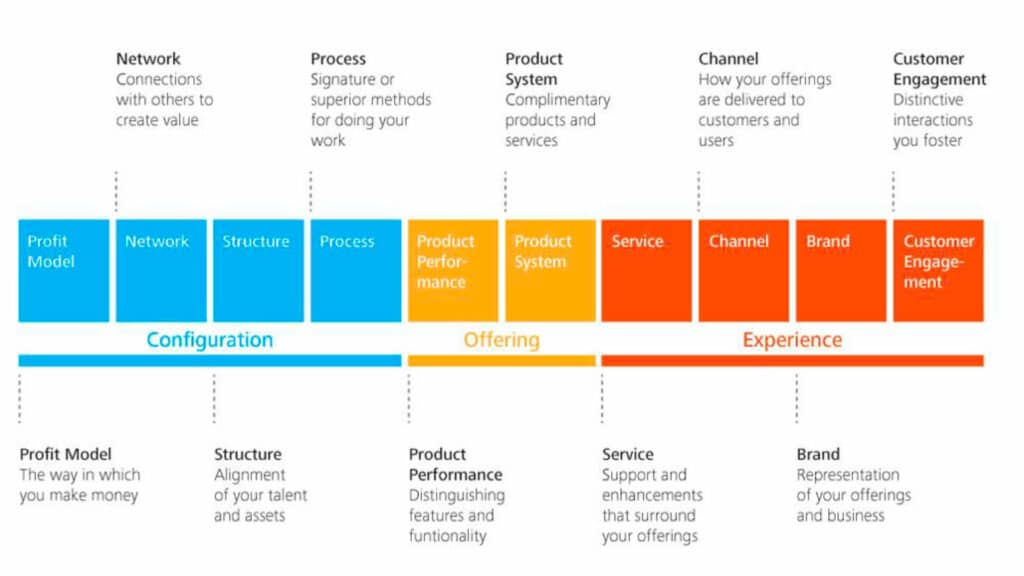
These ten types of frameworks can be used in different combinations and are classified into the three categories shown below:
Category Frameworks
1) Profit Model
2) Network
3) Structure
4) Process
Offering Frameworks
5) Product performance
6) Product system
Experience Frameworks
7) Service
8) Channel
9) Brand
10) Customer Engagement
Business Transformation Management Frameworks
One approach to managing business transformation is to use a framework that takes a holistic and process-driven approach to achieving new business outcomes. These frameworks help transformation managers and leaders to navigate the complex undertaking of managing transformations, whether they involve major overhauls or minor performance improvements.
Business Transformation Management Framework Example:
The Business Transformation Management Methodology (BTM2)
BTM² was the world's first holistic business transformation management methodology. It offers a clear framework with distinct stages, results, and corresponding techniques. This generic framework is applicable to different business transformation situations and not limited to a single industry, function, or technology.
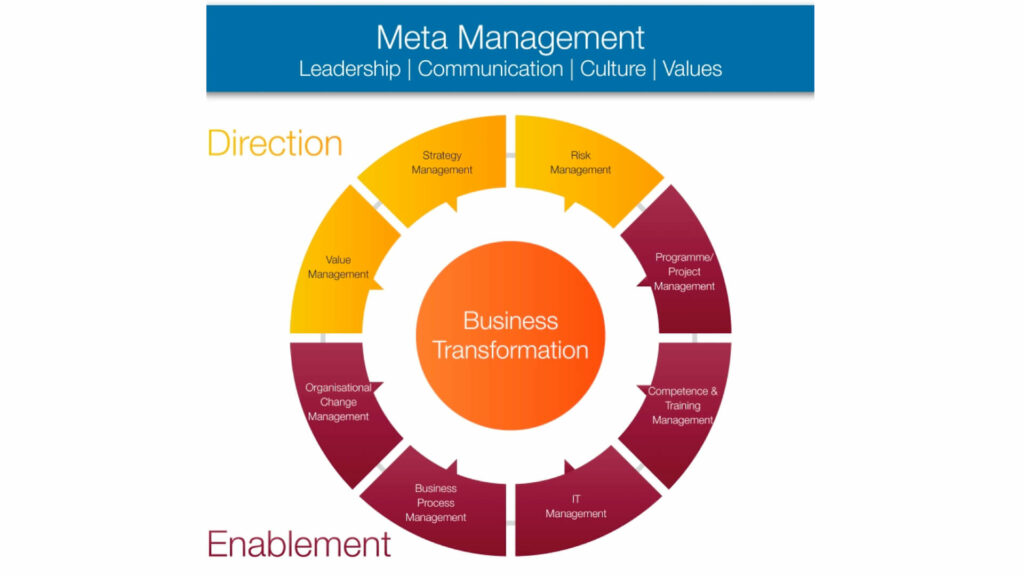
Across the four business transformation phases of Envision, Engage, Transform, and Optimise, BTM² provides guidance on managing nine disciplines of transformation management.
Meta Management
Strategy Management
Value Management
Risk Management
Project and Programme Management
Business Process Management
IT Transformation Management
Organisational Change Management
Competence and Training Management
Digital Transformation Frameworks
A digital transformation framework is a guide for managers and leaders to adopt new business models, operating models and customer models with digital technologies to prepare their business for future. By using technology and data, innovative individuals are creating completely new ways to generate value for the business, customers, employees, and partners. Some companies are simply digitising existing processes, while others are transforming their business models and becoming leaders in the digital economy.
Digital Transformation Framework Example:
Digital Capability Framework
The Digital Capability Framework was created to assist organisations in implementing digitally enabled business transformation and fostering innovation. This framework facilitates the analysis of the current state of a company and identifies new business cases that can be enabled by technology trends.
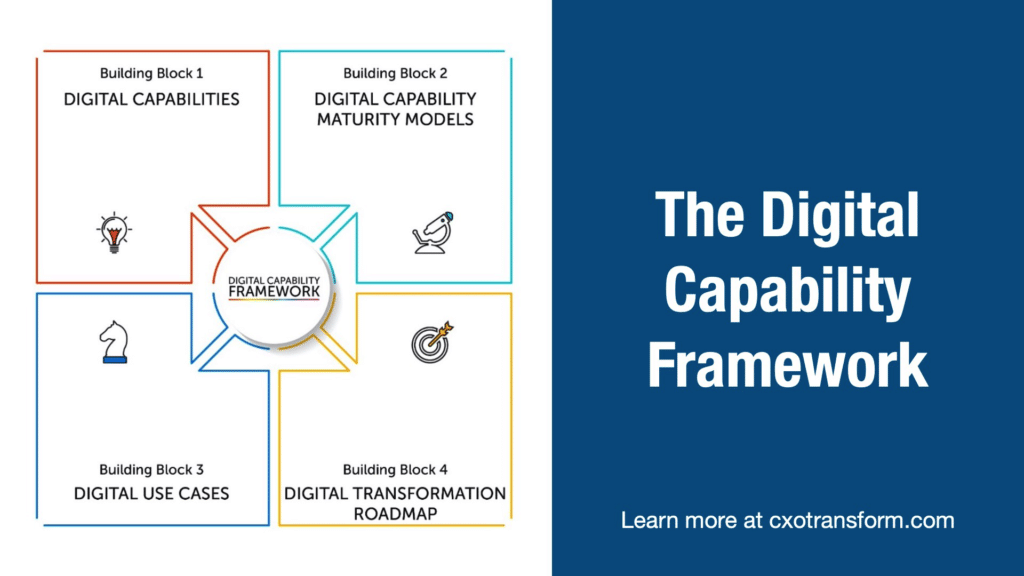
The Digital Capability Framework enables managers and leaders to take a structured business-oriented approach to digital transformation, which results in a more collaborative relationship between the IT and Business teams.
This business framework consists of four building blocks which are:
Digital Capabilities
Digital Capability Maturity Models
Digital Use Cases
A Digital Transformation Roadmap
No alt text provided for this image
Customer Centricity Frameworks
Companies use customer centricity frameworks to constantly anticipate and understand customer needs, and ensure they are met through their business processes. While it is not uncommon for companies to declare their customer focus, those that truly prioritise customer satisfaction are few and far between.
Over the past decade, customer expectations and behaviours have undergone a significant shift. Companies are now expected to meet customers' needs and expectations at every interaction to earn customer loyalty. The degree to which “customer-centricity” is ingrained in every employee in your organisation determines your ability to meet these expectations.
Customer Centricity Framework Example:
The Three-Wheel Framework of Customer-Centricity
The Three-Wheel Framework of Customer-Centricity consists of three inter-connected wheels that each represents one important phase in customer-centricity. All three wheels need to move together in a synchronous manner in order to create a customer-centric focus in the organisation.
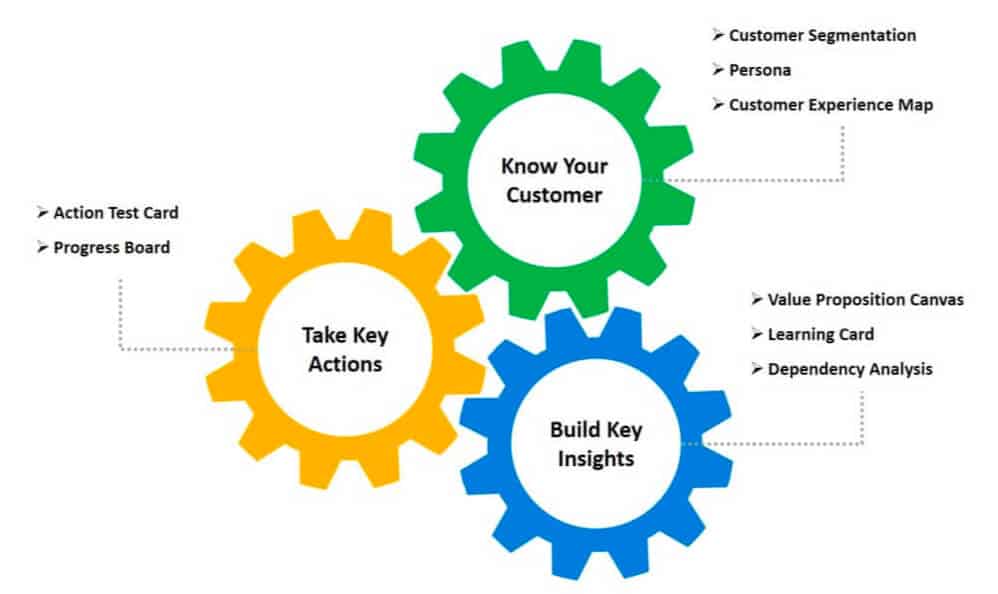
The business framework consists of these three key components:
Know Your Customer
Build Key Insights
Take Key Actions
Project Management Frameworks
Project management frameworks refer to the processes, guidelines, and principles that are used to manage a project from its initiation to its completion. These business frameworks are designed to help project managers and their teams complete projects on time, within budget, and with the desired outcomes. They provide a structure for managing resources, identifying risks and issues, communicating progress and milestones, and ensuring that everyone is working towards the same goals. Project management frameworks vary depending on the project, organisation, and industry.
Project Management Framework Example:
The Project Management Body of Knowledge (PMBOK)
The term PMBOK stands for Project Management Body of Knowledge, which encompasses a set of recommendations, techniques, processes, and terminologies that are extensively employed throughout the project management domain. The adoption of PMBOK assists companies in implementing uniform practices across different departments, customising procedures to cater to specific requirements, and enhancing the likelihood of project success.
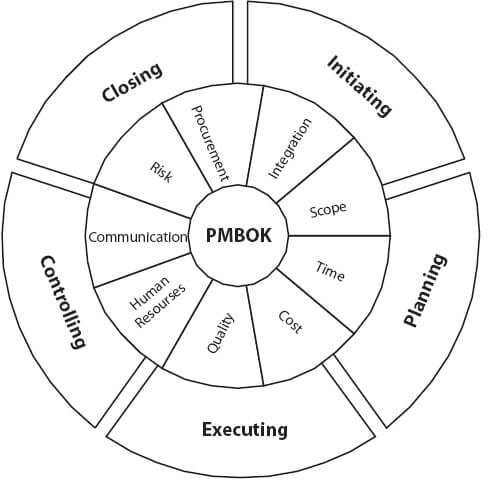
The Project Management Body of Knowledge (PMBOK) recommends the use of 47 project management processes, which are classified into five Process Groups:
Initiating Process Group
Planning Process Group
Executing Process Group
Monitoring and Controlling Process Group
Closing Process Group
Each of the 47 processes is specified by Inputs, Tools & Techniques, and Outputs, and are grouped into the following ten knowledge areas.
Project Integration Management
Project Scope Management
Project Time Management
Project Cost Management
Project Quality Management
Project Human Resources Management
Project Communications Management
Project Risk Management
Project Procurement Management
Project Stakeholder Management
In Summary
Numerous resources such as articles, videos, and podcasts offer innovative and practical business frameworks, varying from high-level to detailed with rich information. Selecting a business framework depends on the organisation's objectives and often the preferences of key decision-makers. Employing frameworks can be beneficial for businesses to achieve their goals and is often considered an expectation for top-paid professionals in their fields.
The decision about which business frameworks are used in an organisation depends on the business objectives and the personal preferences of senior managers and executives. Although, frameworks can be highly advantageous for businesses in achieving their goals and are frequently used by top-paid professionals in their respective fields.

